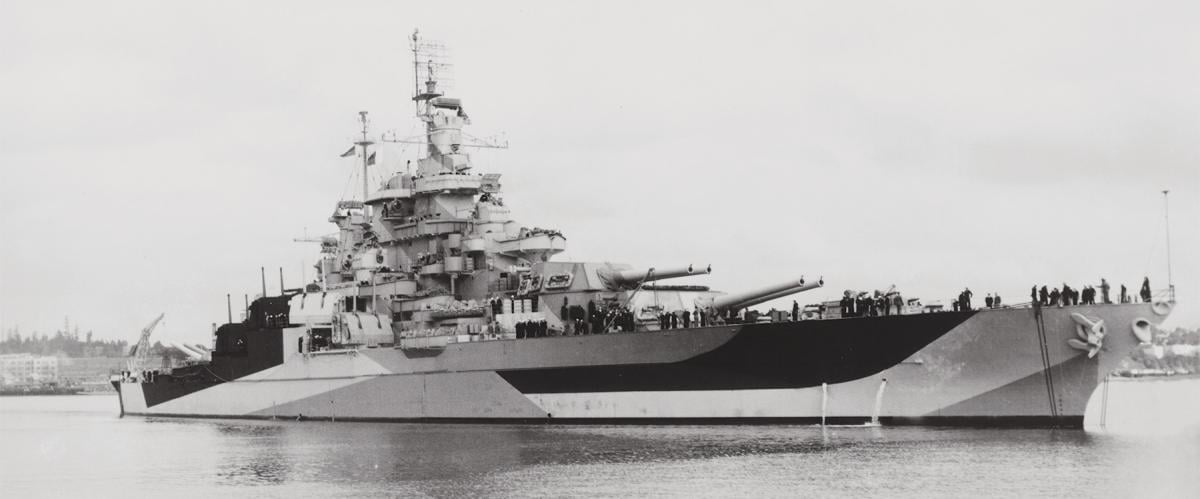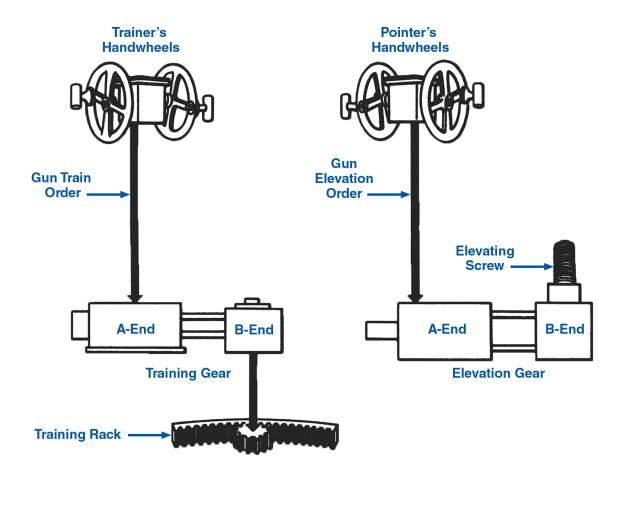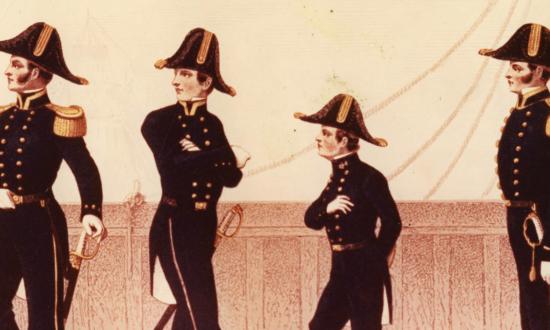In the early 1900s, the U.S. Navy was on a quest for improved gunnery, led by William S. Sims and like-minded officers. American crews had demonstrated at the Battle of Santiago in 1898 that they could load and fire their guns with speed, but the hit percentage was very low. Subsequent efforts to improve the Navy’s gunnery focused on training gun crews to maintain continuous aim on a moving target. Accuracy improved tremendously, especially on smaller caliber guns that could easily be trained by hand. But achieving fast, continuous aim with the heavy main battery remained elusive—until engineers working for the Bureau of Ordnance developed the first practical oil-based hydraulic system. Known variously as the Universal Variable Speed Control, the Williams-Janney Speed Control, or, simply, the “Waterbury pump,” this new system was a paradigm shift in power transmission technology. Versions of the Bureau’s novel “swashplate” hydraulic pump remain in use today and are the basis of modern hydraulic systems.
Power-operated turrets evolved rapidly in the latter half of the 19th century. The British developed the original hydraulic equipment, which used water under very high pressure to elevate the guns and control turret rotation. The hydraulic piping used a system of “walking pipes” with rotating elbows to train the turret. The sealing of these pipes was problematic, however, making the system prone to leakage. American water hydraulic systems based on British designs soon lost favor with the U.S. Navy, which turned instead to electric power.
Electric motors could raise or lower the guns of the main battery by driving an elevating screw and rotate a turret by turning the pinion gears. But the all-electric system required some skill to operate, especially when starting from rest, to avoid an electrical overload that would trip a circuit breaker and shut down the gear just when it was needed most. Variable speed control in early DC circuits required separate heavy-duty resistors (which generated heat) for each desired speed, while wiring faults in overloaded circuits could create dangerous sparks. Electric-powered turrets performed acceptably in calm waters but experienced difficulties operating at speed in a seaway, and the low-speed control needed for continuous aim remained unsatisfactory. Electrical equipment was blamed for several horrendous turret fires, and a special investigation in 1907 recommended removing all electrical switch gear from inside gunhouses. Reverting to water-based hydraulic systems was not feasible, but the Navy had been developing a new hydraulic system that overcame the problems associated with the previous designs.
Harvey D. Williams and Reynold Janney of New York invented the Universal Variable Speed Control, which was produced by the Waterbury Tool Company of Waterbury, Connecticut. Williams, an engineer with the Navy’s Bureau of Ordnance, not only was familiar with the problems of speed control, but also was well positioned to promote his invention to the Navy. Williams’ system employed an oil-filled hydraulic pump-and-motor system that used two identical and interconnected axial variable displacement units, referred to as the “A” end and the “B” end, to safely convert electrical power into useful mechanical operation.
Unlike previous designs, the Waterbury Pump did not use a crankshaft driven by pistons in a fixed-displacement cylinder block. Instead, nine pistons and cylinders were arranged along the circumference of a rotating barrel, with connecting rods attached to a ring on a swash plate or “tilting block.” The space inside the units was filled with machine oil that served as both a lubricant and the driving medium.
The A end acted as a pump, while the B end acted as a motor. A constant-speed electric motor drove the rotation of the A end, pumping oil through a valve plate into the B end. This oil acted on the pistons in the B end, turning an output shaft at variable speed. The angle of a tilting block determined the stroke of the pistons, so that any variation in the angle also varied the volume of hydraulic oil displaced by the pistons. The volume of flow determined the speed imparted to the B end, increasing from zero when the tilting block was vertical to full speed when the block was at maximum angle, enabling the operator to obtain very fine control with a minimum of physical effort simply by turning a handwheel that changed the angle of the tilting block. Separate pairs of A/B pump arrangements could control separate axes of motion.
The crankless design allowed the Water-bury pump to transmit power in a smooth, continuous flow, eliminating the jerkiness experienced with previous systems, and thereby providing superior low-speed performance. Another advantage was that the direction of the rotation of the B end could be changed by merely reversing the angle of the tilting block without changing the speed or direction of the driving motor, eliminating the delays needed to reverse direction in the all-electric systems.
The A and B units could be joined directly through a valve plate, forming one large device, or by pipes—so that the A end and its driving electric motor could be located almost any distance from the B end located adjacent to the gear being operated. The units came in a variety of sizes, scaled to fit the needed power requirements. This enabled naval designers to save weight and space in critical areas and was such a versatile feature that the Waterbury pump system found applications wherever power-driven equipment was required.
Very fine machining tolerances were the main drawback, making Waterbury pumps expensive and difficult to produce and leading to slow implementation. After several years of development, the first variable-speed gear was installed in 1906 to control the turret-elevating screws of the USS Virginia (BB-13). It was such a success that, soon thereafter, it was used to control the train of the turrets as well. By 1909, the Waterbury pump was adopted for use in all new capital ships under construction, powering projectile and powder hoists, ramming gear, rudder controls, and boat cranes. Further refinements added hand wheels identical to those used to control the gun mounts of the secondary battery; with little additional training, gunners could move the big guns with the same ease and facility as the smaller guns. The ability to accurately change gun elevation and turret angle with minimum effort—at speeds ranging from a crawl to as fast as the handwheel could be turned—allowed the gun pointer and the gun layer each to keep their eyes on their telescopic gun sights while maintaining continuous aim on a moving target.
Ironically, the ability to maintain continuous aim was achieved just as big-gun battle ranges were increasing beyond the gunners’ line-of-sight. With the introduction of director fire control, a “gun solution” was now transmitted to each position in the turret, and the pointer and trainer had only to follow the indicator mounted in front of them to elevate the gun to match the designated range and train the turret to the correct deflection angle. When the director received notification that the guns were loaded and aimed as specified, he could fire a salvo, observe the fall of shot, and make corrections as needed. Even though the men in the turret no longer had direct fire control, the variable-speed gear allowed them to respond to rapidly changing firing orders with speed and accuracy.
The drive for rapid firing rates at maximum ranges began a quest for greater automation throughout the fire-control system. Thanks to the ease of control inherent in the Waterbury system, aiming could be fully automated with the addition of synchros to remotely control the speed gear in the turrets. Early attempts at controlling gun elevation and training remotely from the director were unsuccessful; lag in the system’s position sensors caused the turrets to “hunt” for the gun solution in automatic mode. A receiver-regulator was introduced into the hydraulic piping that dampened system feedback, which fixed the problem and allowed the turrets to be controlled automatically from any of several directors and the main combat control center. The automated hydraulics also were installed on the new dual-purpose 5-inch secondary batteries, which greatly improved the effectiveness of antiaircraft fire.
During World War II, the new radar-equipped automated fire-control systems were incorporated into the new battleships under construction and installed in older ships during major refits. Their effectiveness was demonstrated during the Battle of Surigao Strait, in the early morning of 25 October 1944, when Rear Admiral Jesse B. Oldendorf’s rebuilt and modernized fleet of Pearl Harbor veteran ships opened up on a Japanese battleship force at a range of 22,400 yards. The USS West Virginia (BB-48), equipped with the latest fire-control equipment and gun turret controls, made the most hits during 13 rapid salvos. The Japanese literally never saw what hit them. The war in the Pacific proved that the Navy’s fire-control system was the best in the world, enabled in no small part by the inventive American genius that created the Waterbury pump and spawned the oil-based hydraulics industry.
Sources:
The Universal Speed Gear, Turret and Gun Control, private publication by the Waterbury Tool Company, Waterbury, CT, 1909, for use by the U.S. Navy Bureau of Ordnance.
Officers of the United States Navy, Naval Ordnance: A Textbook (Annapolis, MD: U.S. Naval Institute, 1939), 229–38.
Bureau of Naval Personnel, Training Division, NavPers 16116: Naval Ordnance and Gunnery (U.S. Navy, May 1944), 88–93.








